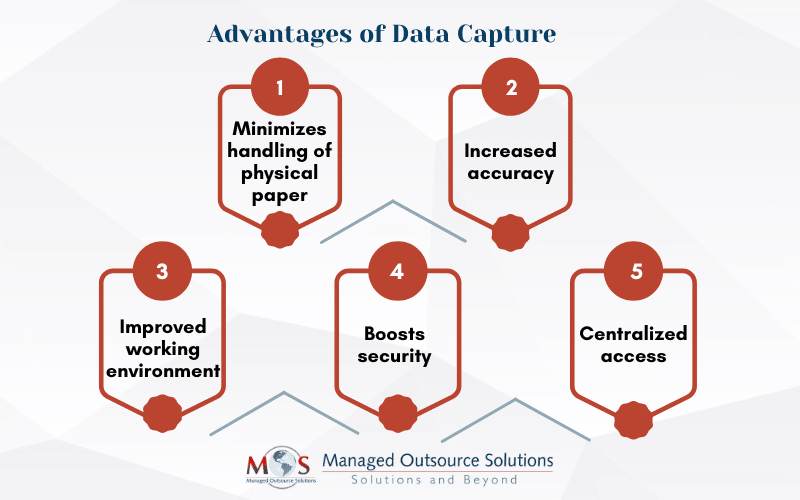In the rapidly evolving landscape of business operations, efficient data management is pivotal for success. Effective data capture is at the core of this efficiency, streamlining processes and enabling informed decision-making. One crucial aspect of data capture is document scanning, which transforms physical documents into digital format. Utilizing document scanning services not only simplifies data management but also enhances accessibility, security, and overall business performance.
Unstructured media including papers, emails, PDFs, and photos include more than 80% of company data. One of the largest alleged issues facing businesses is transforming unstructured data into structured, machine-readable, and searchable data. Data capture is essential to the operation of enterprises. It should come as no surprise that data is regarded as one of the most valuable commodities for enterprises, given that 97 zettabytes of data were created in 2022 alone (globally).
What Is Data Capture?
The process of obtaining organized and unstructured information from any type of document—paper or electronic—is known as data capture. After that, this data is formatted so that machines can read it, making it easier to store, process, and use. The amount of data that organizations need to handle these days has driven technological developments in the field of Artificial Intelligence (AI). This led to technology taking the data capture process to new heights through automation.
A form that a person fills out usually initiates the data capture procedure. For example: When seeing a doctor for the first time, a patient is required to complete an intake form. The (paper) form has the name, address, and other pertinent information written on it. The patient’s information can be digitized by entering it into a database or electronic system, and then the patient data will be usable and available to those who require it.
Basic Steps in the Data Capture Process
- Documents provide information to data capturing technology. Receipts, invoices, surveys, films, questionnaires, and other reports are examples of documents.
- Data is categorized by data gathering software using entered filters and criteria. For example, all receipts could be grouped together by the software.
- After that, the documents are digitized and the important data extracted.
- The retrieved data is kept in the cloud or other centralized storage site. Companies use the gathered data for additional procedures and quick insights.
Advantages of Data Capture
- Minimizes handling of physical paper: Digital files are essential in a remote work environment. With this data processing method, there is no longer the need to pay for storage, courier services, file destruction, or moving mountains of documents throughout the workplace and between buildings. By capturing documents where they come from, on a range of devices, and eliminating the need to manually sort or insert separator pages before the scanning stage, paperwork procedures become more straightforward and easy.
- Increased accuracy: Organizations rely on manual entry and organizing strategies in the absence of automated data acquisition. Workers manually enter and categorize data, which takes a lot of time and effort. Human mistake is more likely to occur while using manual procedures. By extracting and organizing precise data in accordance with preset parameters, data capture reduces the possibility of inaccuracy. It is possible to enhance user and customer experiences by employing precise data.
- Improved working environment: By eliminating manual labor, automatic data collecting frees up employees’ time for more rewarding work. Repeated data entry is tiresome and may cause employees to become depressed or lose focus. Employee productivity may increase and they could feel that they are doing something meaningful if the process was streamlined. Furthermore, quick data access speeds up identification processes and search times, which facilitates task completion throughout daily operations.
- Boosts security: Paper documents are difficult to store safely and can take up a lot of room when stored. Sensitive and confidential information could be revealed to uninvited parties. This is the past thanks to automated data collecting methods. Sensitive data can be encrypted and hidden using a few ways, shielding it from prying eyes and illegal access.
- Centralized access: Data cannot be accessed from distant locations when paper documents are stored in an archive. This indicates that workflows are disrupted and procedures slowed down. Data can be automatically collected and saved in the cloud, giving different departments and individuals access to the information they need.
Read our post to understand the importance of document scanning:
How Document Scanning Promotes Compliance and Reduces Risk
Effective data capture is essential for optimizing business operations and achieving long-term success. By leveraging document scanning services, businesses can transform their data management processes, ensuring accuracy, efficiency, and security. This not only enhances day-to-day operations but also positions companies for future growth and innovation. Investing in advanced data capture solutions is a strategic move that yields significant benefits, driving operational excellence and competitive advantage.
Enhance Efficiency and Security!
See the difference it makes for your business.





